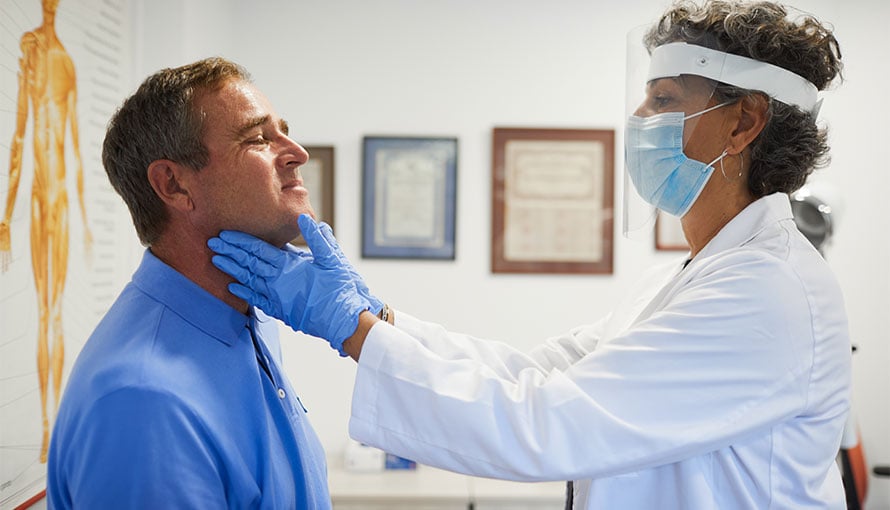Types of Oral Cancer

Oral cancer describes a malignancy that begins in any part of the oral cavity (mouth) or the oropharynx (the portion of the throat at the back of the mouth). This cancer can be classified by its cellular composition or by where it originates in the mouth or oropharynx.
About 90% of oral cancers that develop in the oral cavity are squamous cell carcinomas—a cancer that occurs in the flat, scale-like squamous cells that line the mouth and the back of the throat. Other, less common types of oral cancer include:
- Verrucous carcinoma – A rare subtype of squamous cell carcinoma that tends to grow very slowly.
- Oral melanoma – A type of skin cancer that forms in the melanocytes, the pigment-producing cells that give skin its color.
- Minor salivary gland carcinomas – Multiple subtypes of oral cancer that originate in the salivary glands located throughout the lining of the throat and mouth.
- Lymphoma – A type of cancer that can occur in lymphoid tissues located at the base of the tongue or in the tonsils.
Oral cancer treatment recommendations are based largely on where the cancer begins in the oral cavity or oropharynx. Three of the most frequently occurring types of oral cancers include:
Lip cancer
The most common type of oral cancer, lip cancer usually forms in the squamous cells of the lips. Risk factors for lip cancer include:
- Male gender
- Smoking or using other forms of tobacco
- Drinking alcohol
- Exposure to ultraviolet (UV) rays from tanning beds or the sun
Symptoms
The symptoms of lip cancer are much like those of other oral cancer types. A few of the most common signs of include:
- Frequent lip pain or numbness
- A sore on the lip that does not heal
- A lump, discolored patch or thickened area on the lip
- A neck lump or mass
Tongue cancer
Tongue cancer is typically related to tobacco use and excessive alcohol consumption in men over age 40, although anyone can develop this type of oral cancer. Regular visits with a dentist and periodic self-exams of the tongue and mouth can help identify this cancer in an early stage when it is easiest to treat.
Symptoms
Tongue cancer symptoms typically involve:
- Mouth numbness
- A persistent sore throat that does not improve
- Painful swallowing
- Discolored patches on the tongue
- A lump or ulcer on the tongue that does not go away
- Tongue bleeding
Throat cancer
When in reference to oral cancer, throat cancer describes a malignancy that develops in the oropharynx, which encompasses the base of the tongue, tonsils and the part of the throat at the back of the mouth. Men who smoke or drink alcohol in excess are most likely to be diagnosed with this cancer, although it can affect anyone.
Symptoms
The symptoms of throat cancer can vary from person to person. Most commonly, symptoms include one or more of the following:
- Difficult or painful swallowing
- A persistent sore throat that does not improve
- Unexplained weight loss
- Coughing up blood
- Changes in voice
- Ear pain that does not go away
- Difficulty moving the tongue or opening the mouth fully
- White patches on the tongue that do not go away
- A lump in the back of the throat or neck
Moffitt’s approach to oral cancer
Moffitt Cancer Center’s Head and Neck Cancer Program is home to a multispecialty team with an unparalleled level of experience in diagnosing and treating even the most uncommon oral cancers. If you’d like to receive a second opinion or discuss your symptoms with a skilled oncologist, Moffitt is an excellent place to turn. To rapidly connect with a Moffitt professional, submit a new patient registration form online or call 1-888-663-3488.
Diagnosis
